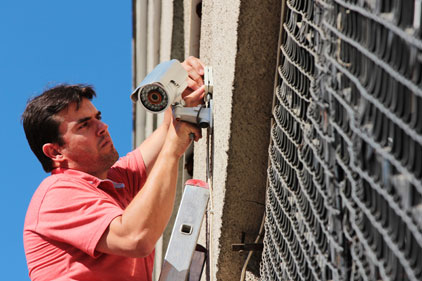It’s time to invest in a security system or upgrade that legacy system from 1990. How does an organization decide what system to choose? What are the steps to take? Who should be involved? While there are several ways to accomplish this, we will walk through the most common process.
Hire a Consultant
Many users choose to hire a consultant for his or her expertise and to assist with the entire process. Consultants understand the complexities involved with choosing the right security system. They perform vulnerability and threat assessments of the organization and can oftentimes write security policies, procedures and action plans. They manage the buying process from start to finish and make sure no stone is left unturned.
Next, a request for information is sent out either by the consultant or end user. An RFI is just that; it’s a request for information. It can request information about the manufacturer, its products, company philosophy, customer service measures, pricing, etc. Each RFI is unique and can be 10 questions or hundreds of questions, depending on the size and scope of the system’s desired functionality and the end user’s wishes.
The end user and/or consultant reviews the RFIs and narrows the responses down to a few – often three finalists. At this point, each security manufacturer finalist goes through an intensive interview process, which includes a complete presentation and demonstration of their security solution. Here the end user asks more questions about the company, its philosophies, products, etc. and has the opportunity to have an open discussion with their potential provider.
End users may even have the option to install demo software prior to selecting their security system. End users must thoroughly evaluate the software to see if it meets their needs. In addition to being easy to use, it should have all the functionality they require such as identity management, visitor management, intrusion detection and video management. The end user should perform their own tests and compare which features are standard with the manufacturers’ software product offerings along with which features will require additional costs or licensing.
Choose an Integrator
Once a manufacturer is selected, a Request for Proposal is submitted to selected integrators who work in the area. Integrators now have the opportunity to answer questions about their company and how well they know the manufacturer’s products. Integrators complete proposal packages that include costs for services, labor, cabling, conduit, product and any other items required to perform the entirety of the installation’s scope of work. Chosen integrators are invited to give a presentation about their company and the manufacturer’s product.
Perform Due Diligence
End users are encouraged to pick up the phone and talk with other companies that are using the security hardware and software they are considering. Does the software meet their needs? Is it easily expandable? Does the company stand by their products like they promise? By talking with references, end users get a better feel for the software and the company. They want to work with an integrator and manufacturer that treat them like a long-term partner. After all, they will have their access control system for the next 10-15 years.
Make the Decision
After discussions with the references and a thorough review of the product’s functionality, choose a security solution that can integrate with the company’s policies and procedures. Does it have the feature sets they need now, as well as what the organization would like to transition to in the future? Is the system cost effective? Does the user trust the manufacturer and end user?
Once all the information is collected and evaluated, the user can select the best manufacturer and their preferred integrator of choice. If they take their time and perform their due diligence, they will be happy with their choice.



